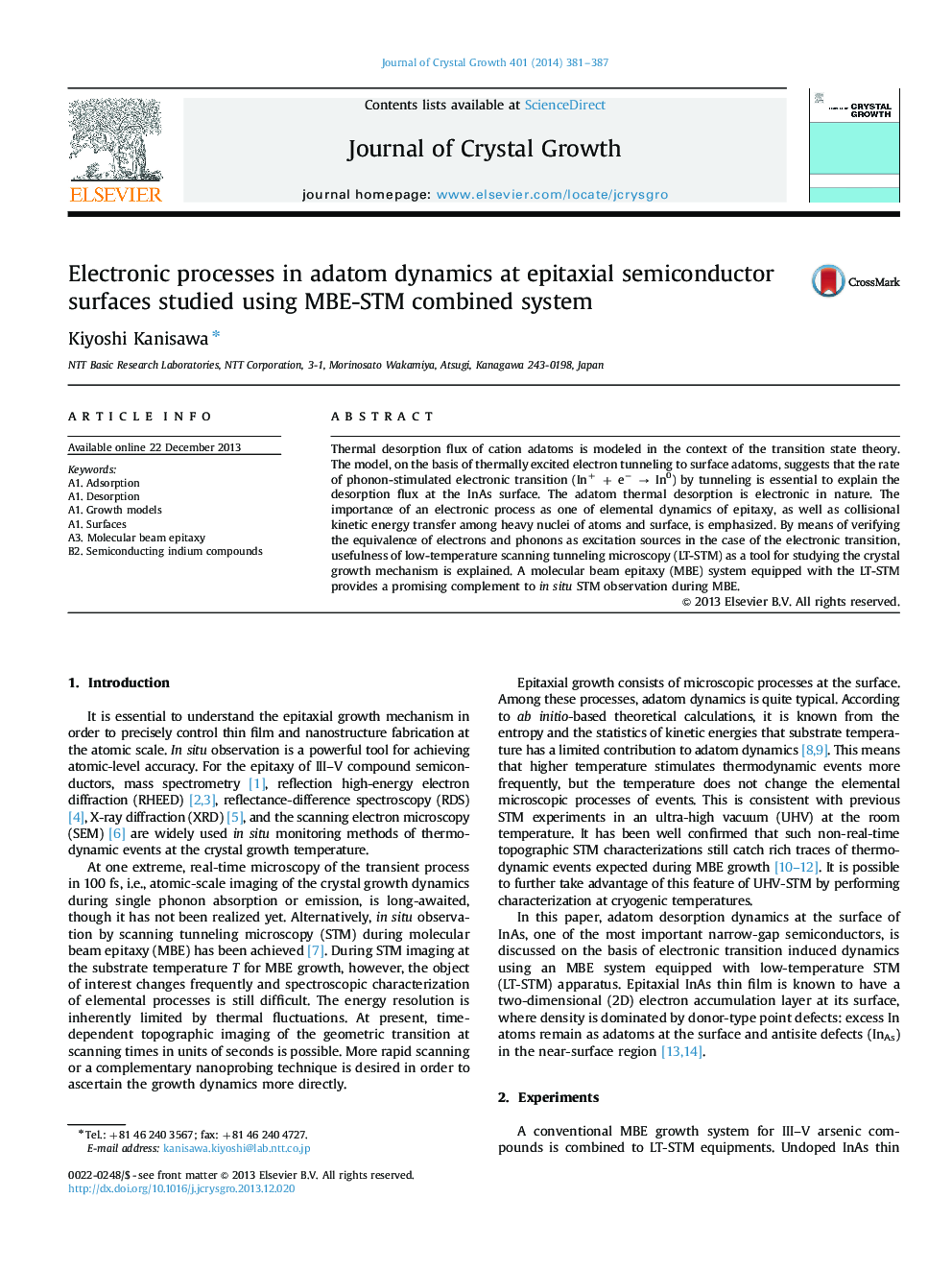| Article ID | Journal | Published Year | Pages | File Type |
|---|---|---|---|---|
| 1790370 | Journal of Crystal Growth | 2014 | 7 Pages |
Abstract
Thermal desorption flux of cation adatoms is modeled in the context of the transition state theory. The model, on the basis of thermally excited electron tunneling to surface adatoms, suggests that the rate of phonon-stimulated electronic transition (In+ + eâ â In0) by tunneling is essential to explain the desorption flux at the InAs surface. The adatom thermal desorption is electronic in nature. The importance of an electronic process as one of elemental dynamics of epitaxy, as well as collisional kinetic energy transfer among heavy nuclei of atoms and surface, is emphasized. By means of verifying the equivalence of electrons and phonons as excitation sources in the case of the electronic transition, usefulness of low-temperature scanning tunneling microscopy (LT-STM) as a tool for studying the crystal growth mechanism is explained. A molecular beam epitaxy (MBE) system equipped with the LT-STM provides a promising complement to in situ STM observation during MBE.
Keywords
Related Topics
Physical Sciences and Engineering
Physics and Astronomy
Condensed Matter Physics
Authors
Kiyoshi Kanisawa,
